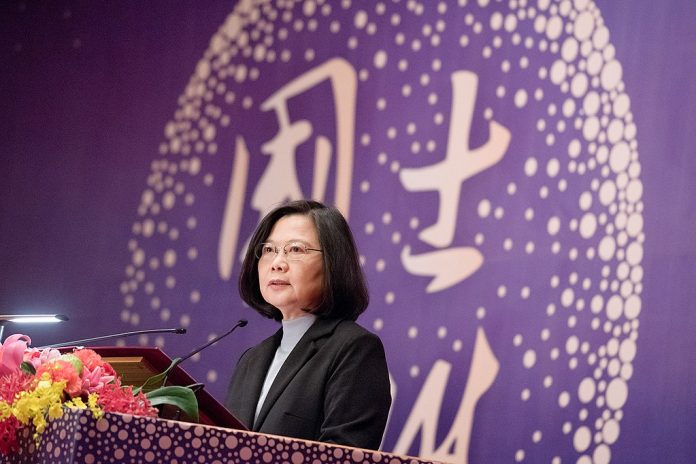In 2020 under the leadership of Tsai Ing-wen, the Democratic Progressive Party (DPP) came into power for the second consecutive term in Taiwan. Tsai who holds an anti-China attitude coupling with her popular mandate exhibits the shifting focus of Taiwan from Mainland China to the Indo-Pacific. In this regard, the New Southbound Policy (NSP) adopted by Tsai in 2016 becomes more significant in the current geopolitical circumstance. Particularly, when China’s increased military exercises near Taiwan’s territories and PLA’s warplanes encroaching at Taiwan’s airspace coupled with China’s new security legislation in Hong Kong are the latest examples of Beijing’s intention of implementing the One China Policy. Hence, the NSP which was designed to strengthen Taipei’s economical, technological and educational relations with Southeast Asia, South Asia and Oceania. Interestingly, at the Indo-Pacific Dialogue in April 2019 at Taipei City, Tsai stressed the possible ways of cooperation between Taiwan’s NSP and United States’ vision for a Free and Open Indo-Pacific (FOIP). So the future of NSP revolves to comply with a rules-based order in the Indo-Pacific.
Assessing NSP
The New Southbound Policy announced in May 2016 is a political response of the DPP against the policy decisions of the previous Kuomintang (KMT ) government under the leadership of Ma Jing-yeou. while being in the opposition seat, the DPP criticised the then government for signing the Economic Cooperation Framework Agreement (ECFA) with the People’s Republic of China in 2010. In the words of Tsai Ing-wen, the ECFA trade agreement is the sole reason for excessive Chinese economic influence in Taiwan. Thus, it becomes important for the DPP to diversify its attention to other countries in the region, where the NSP comes into picture.
The NSP is unique in its priorities and different from the predecessor Go South Policy (GSP) initiated by Lee Teng-hui in 1994. The GSP initiated for greater trade relations with Southeast Asia. But the scope of NSP is not limited to trade and it encompasses strategic, economic, cultural and educational aspects. The financial budget provided for NSP and its substantial increase over the last couple of years shows the priorities of Taipei to increase its strategic depth in the Indo-Pacific.
Budget Allocation to the NSP for the Financial years 2018 and 2017 (New Taiwan Dollars, Millions)
| 2018 NSP Budget | NSP as % of 2018 Budget | 2017 NSP Budget | NSP as % of 2017 Budget | Change | |
| Total Budget | 7255 | – | 4452 | – | 63% |
| Ministry of Foreign Affairs | 323 | 1.2 % | 260 | 1.1% | 24% |
| Ministry of Education | 1696 | 0.7% | 1000 | 0.4% | 70% |
| Ministry of Economic Affairs | 2891 | 5.3% | 1745 | 3.3% | 66% |
| Tourism Bureau | 320 | 6.6% | 218 | 4.1% | 47% |
Source: The New Southbound Policy: Deepening Taiwan’s Regional Integration, 2018
But the performance of NSP so far only reflected in economic and cultural aspects. The outbound investments towards NSP countries increased to 16.16 percent and largely focused on countries like Vietnam, Singapore, Thailand and Australia. In the education sector, students from ASEAN are more attracted to pursue higher studies in Taiwan. From 16,000 students in 2014 to 30,000 students in 2018, the rate shows an increase of 85 percent in the number of ASEAN students studying in Taiwan over the last 5 years. The number of Southeast Asian visitors increased from 2016, it rose to 13.2 percent with 2.42 million in 2018. But China remains the first place with 2.66 million visitors to Taiwan.
Converging Priorities: FOIP and NSP
Amidst the geopolitical shifts, there are some points of intersection in policies of the United States and Taiwan in the Indo-Pacific. While the U.S. is advancing for an open and inclusive Indo-Pacific by the FOIP, Taiwan with its NSP also upholds similar priorities in its strategy. For Taipei primarily aligning with FOIP will invite more recognition and significance in the regional security architecture. In 2017, Taipei outlined five possible projects under the NSP which includes medical cooperation, industrial supply chains, policy forums, youth exchanges and regional agriculture. Incidentally, there is an increase in the number of migrant workers in Taiwan from ASEAN countries. The country is also becoming a hub of education for South and Southeast Asian students.
As pointed out by Denny Roy in his report for The National Bureau of Asian Research, the United States should take a sensible middle path to quietly support Taiwan’s efforts to improve its standing in the Pacific islands. This will help Taiwan to fulfil its potential as a contributor to FOIP.
The China Factor
For Beijing the NSP evolved as a blueprint to challenge natural autonomy of China over Taiwan. Due to the enactment of Anti-Secession Law in 2005, any anti-PRC collective actions will invite military response from Beijing. Taipei via NSP supports India and Japan’s Asia-Africa Growth Corridor (AAGC), However, it is also an implicit counter to the Maritime Silk Road (MSR) Initiative of the PRC.
In Summary, The NSP succeeded in the economic and cultural fields, the increasing encroachments sponsored by Beijing need strategic countermeasures. Being an active contributor to the Indo-Pacific will reward an unofficial military as well as bilateral relations. With firsthand support from the United States and limited support from other regional giants like Japan, India and Australia should be the priority. Even Though the trade between NSP increased, on the other hand, trade with mainland China also showed a hike. This needs to be addressed for reducing the sole economic dependence on China and, Taipei should engage more on trade with the Australasian region.
The views and opinions expressed in this article are those of the author.

The author is a Masters Student in Political Science at the Central University of Pondicherry. He was previously associated with National Institute of Advanced Studies, Regional Centre for Expertise and Global Schools Program-UN SDSN Youth.


